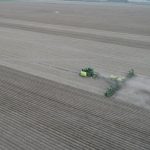How to Check Your Seed Disc Openers
When you buy a new part for an engine, you don’t expect to have to check that it works – right? It’s assumed that new parts will always function as they should – so why doesn’t this hold true for seed opener assemblies?
Time and again, we hear from farmers who say they’re sick of wasting time pre-qualifying seed opener blades before they can take their planter into the field – that’s hours and hours, laid on your back, messing around with business cards to get your openers shimmed up and ready to plant.
That’s why we developed the Wearparts Guaranteed True™️ promise – a field-ready guarantee that takes all the hassle out of prepping your planter and gives you back hours of valuable time to get the real work done.
We test 100% of our seed opener assemblies – no exceptions – to ensure they meet industry-leading tolerances on axial and radial runout. That means no wobble or lope – and no more time wasted on pre-qualifying openers, sending back faulty ones, and waiting for replacements. Let’s dig deeper into how and why we do it.
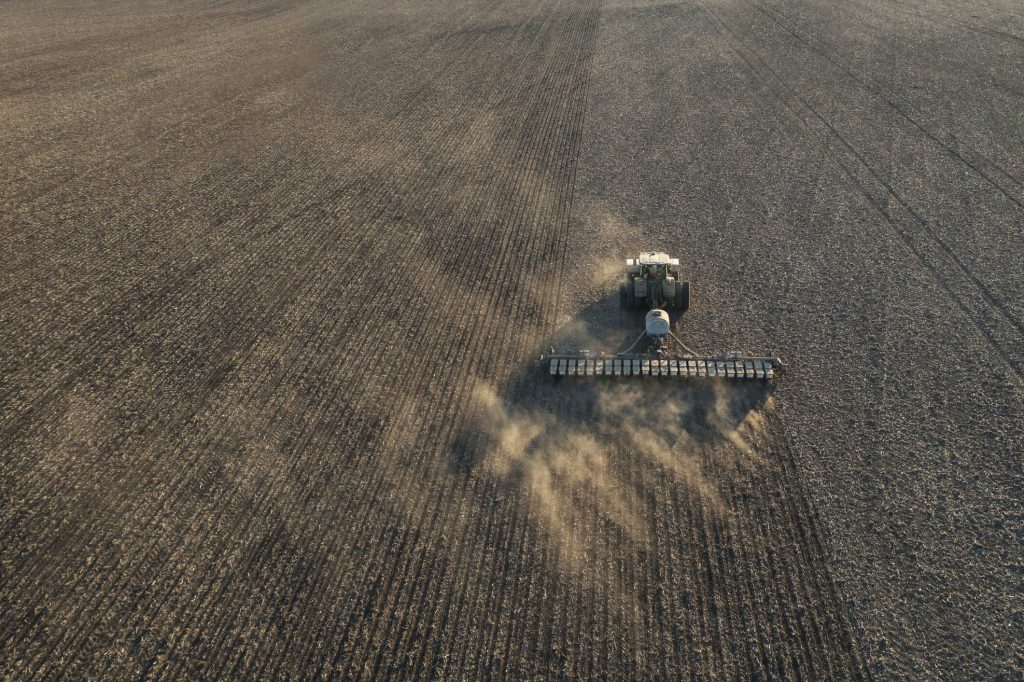
Why does seed opener precision matter?
Seed opener assemblies are comprised of two disc blades, mounted in pairs on a planter’s frame, and angled towards each other so the edges of the two blades meet at their lowest point (called the pinch point). As the blades rotate, this causes them to cut a v-shaped trench in the soil, into which a seed is dropped via the seed tube on a planter.
Gauge wheels dictate how deep the trench is cut – and this depth is precisely calibrated according to the type of seed being planted, and its preferred germination depth. In order to achieve optimal conditions, the seed needs to drop into the bottom of the trench. For this to happen, the trench needs to be precise and clean – if the blades don’t meet precisely, a number of problems can occur:
- Their cutting action is impaired, so surface debris can get pushed down into the trench, known as hairpinning
- The trench can end up with a W-shaped profile instead of a V, impacting seed depth and increasing the risk of air pockets
- The sidewalls of the trench can be unstable and collapse, leaving some seeds too close to the surface
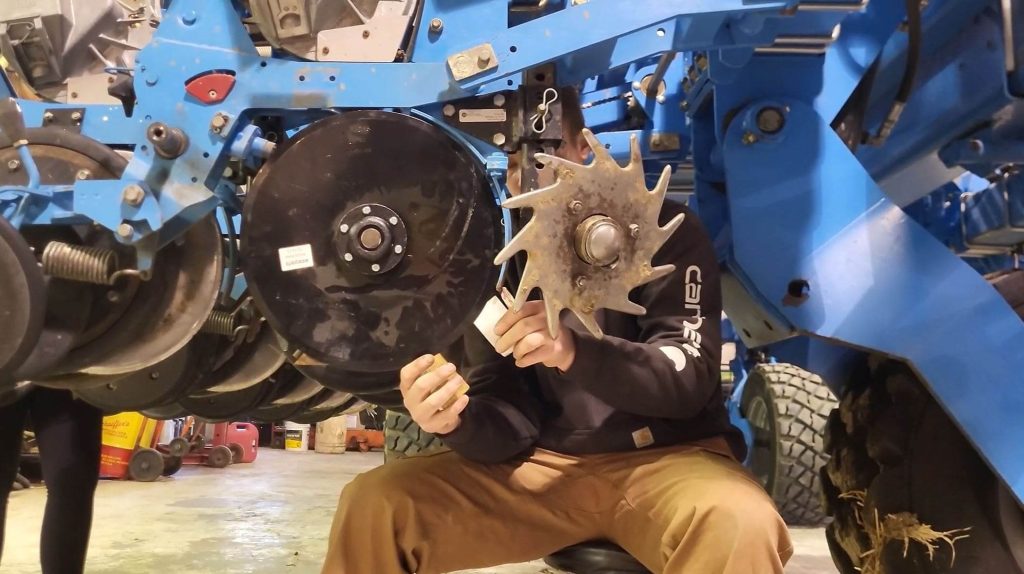
How do farmers check the pinch point of a seed opener?
Prior to planting, farmers typically have to check the pinch points of each pair of seed opener blades in a process called shimming.
The most common way is to insert a cardboard gauge (normally two old business cards, which are the ideal size for the job) into the seed opener assembly and sliding them down to the point where the blades come together, and they can’t slide any more.
The distance between the two cards at this point is the ‘pinch point’ – and this should measure between 1.5 and 2 inches in order to open a trench effectively. On new blades, the pinch point can be adjusted by adding or removing spacers to adjust the angle of the blades.
When to replace seed disc openers?
As a seed opener wears, the pinch point will get smaller – and by the time a disc shows half an inch of wear, it will no longer be able to cut a consistent trench – so it’s time to replace.
But even on new blades, manufacturing issues can cause problems with pinch point accuracy – specifically radial runout (lope) and axial runout (wobble). These issues can vary in severity, but in all cases, they will lead to inferior trenches and potentially impacted crop yields. Let’s explore this in more detail.
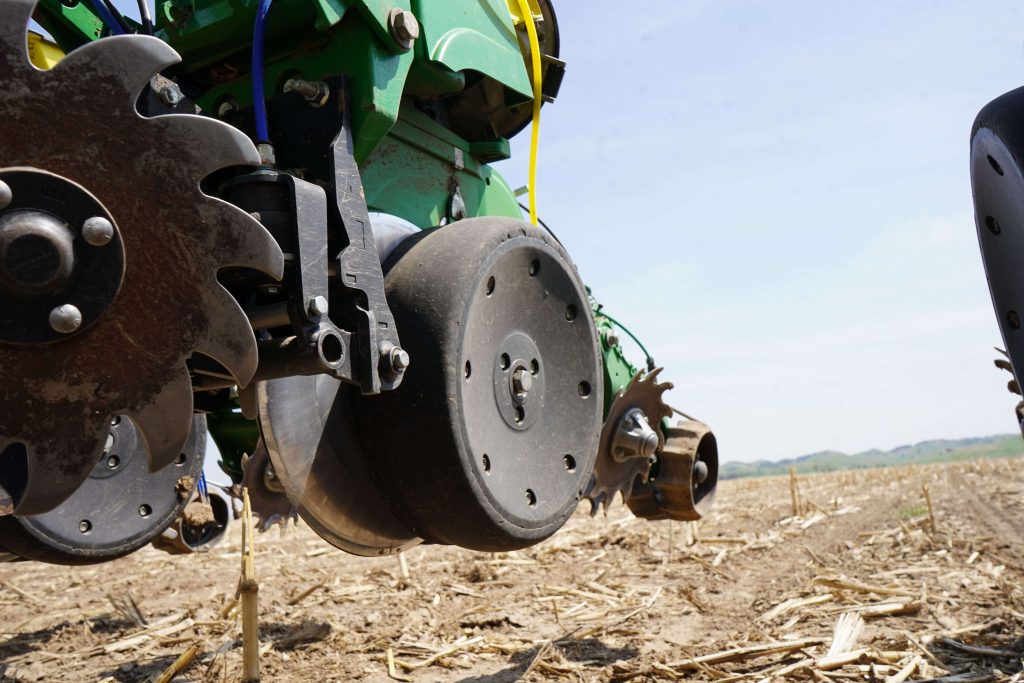
What is axial runout (wobble) in a seed opener?
Axial runout refers to how much the blade wobbles from side to side as it spins. Imagine a record on a turntable that isn’t perfectly level—it moves up and down slightly as it turns.
Axial runout can be created during manufacturing if the blade itself isn’t perfectly flat or if it isn’t mounted perfectly parallel on the hub. It can be caused by uneven pressing of the seed opener assembly during production, or if the hub housing isn’t completely flat – precision manufacturing of all component parts is a must.
Too much axial runout can lead to uneven seed trench walls, inconsistent seed placement, and increased wear on the bearings and other components.
What is radial runout (lope) in a seed opener?
Where axial runout is a side-to-side movement, radial runout is a forward and back motion. It’s caused when the seed opener blade isn’t perfectly centered, so instead of spinning in a perfect circle, it ‘lopes’ forward and back, which will cause the blade to cut deeper for part of its circumference, and shallower for the other part.
Radial runout can occur if the blade’s central hole isn’t perfectly aligned during manufacturing, if the blade is slightly warped, or if the hub or bearing have inconsistencies. As well as uneven cutting depth, it can also cause vibration, leading to premature wear on both the blade and the opener assembly.
Why do Wearparts test 100% of seed openers?
Even with the best quality control processes in place during the manufacture of seed opener blades and hub assemblies, tiny variations can occur. These discrepancies may not fall outside of the acceptable tolerances for the individual components – but when the components are assembled, they can add up to more or less runout for that specific seed opener.
Testing a representative sample of our seed openers can’t tell us whether every seed opener we make is within the acceptable runout tolerance, because the same blade mounted on two different hubs can have different runout performance, and vice versa. This is why we test 100% of our seed openers before they leave our warehouse.
How are Wearparts seed openers tested?
We use laser technology to test our seed opener assemblies in our manufacturing center at Wearparts HQ here in Nebraska.
Each blade is placed on a mechanical turntable that spins the blade, using precise laser beams to detect axial and radial movement while the blade is in motion. The machine head counts thousands of times per second, enabling us to calculate both wobble and lope.
What are the runout tolerances for Wearparts seed openers?
Our tolerances are the smallest in the ag industry – our openers must achieve a MINIMUM of .050/1.27mm axial / .060/1.52mm radial tolerance, but in reality, most achieve results much lower than this.
In real terms, this means that the wobble and lope on our openers is undetectable in the field – delivering precision V-shaped trenches and consistent depth every time, with no need for pre-qualifying your seed openers before fitting them to your planter, and a huge amount of time saved in the shimming process.
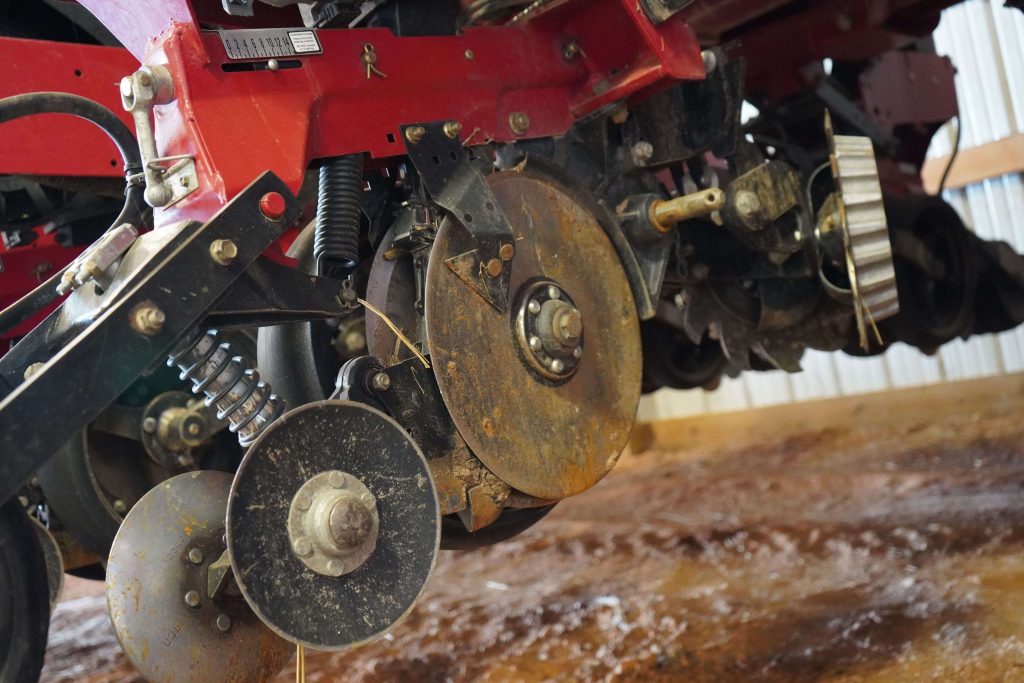
What if I have a problem with my Wearparts seed openers?
Our Guaranteed True™️ promise means it’s extremely unlikely you will ever encounter a runout issue with a Wearparts seed opener in the first place – but it also means that if you do (and it’s a big if) we will refund or replace the blade, with no questions asked.
Need more information?
Whether you’re an existing Wearparts dealer, are interested in becoming a dealer, or you’re a farmer wanting to learn more about our precision seed opener assemblies – including specific compatibility information for your planter – we’d be happy to help. Simply contact our team for answers to any questions you may have, and to make this planting season your most successful yet!



